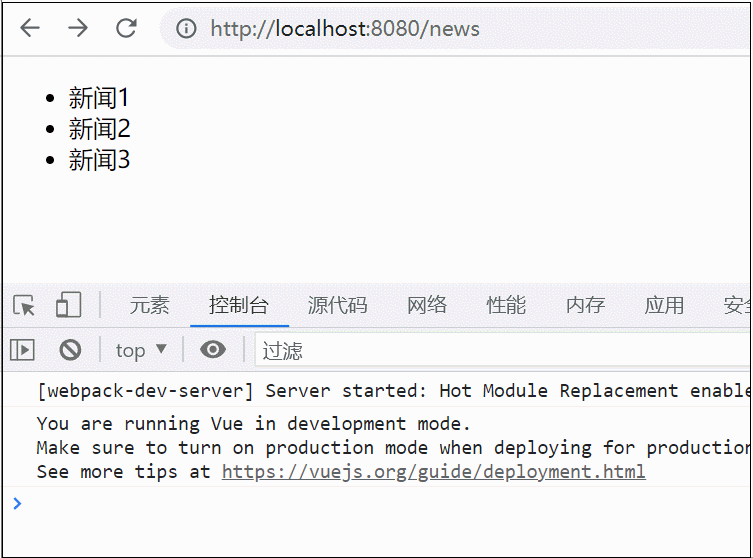注册一个组件
有两种方式可以注册一个组件,第一种是全局注册,第二种是局部注册
# 全局注册
Vue.component('my-component',{
template: '<span>Hello</span>'
})
# 局部注册
var child = {
template: '<span>Hello</span>'
}
new Vue({
// ···
components:{
my-component: child
}
})
注意:组件的注册必须要在Vue实例创建之前
使用组件
<div id="app"> <my-component></my-component> </div>
当我们需要使用到data时,data必须是一个函数,否则将会报错,这是Vue的一个规则,如下
Vue.component('my-component',{
template: '<span>{{message}}</span>',
data:function(){
return {message:'hello'}
}
})
组件间消息传递
当我们封装了组件A,但是组件A又嵌套了组件B,这时候组件AB形成了父子组件的关系,我们应该怎么来让父组件传递消息给子组件呢,这里用到了一个属性值props,如下
Vue.component('my-component',{
props: ['message']
template: '<span>{{message}}</span>'
})
# 通过props传递消息给子组件
<my-component message="Hello"></my-component>
上面的例子,我们通过props传递了参数给子组件,确实能改变子组件的值,但是,假如我们有这样一个要求,props的值是动态改变的,那么这种静态字面量传递参数的方式就不能满足我们的需求了。如下将说明如何进行动态的props值设定
<div id="app"> <input v-model="parentMsg"><br> <my-component v-bind:message="parentMsg"> </div>
这里通过v-bind的命令,将我们的message与parentMsg进行绑定,这样,当我们的parentMsg改变时,message将能实时改变
自定义事件
父子组件之间如果通过props来传递数据的话,那么似乎只能进行单向的数据传递,只能从父组件向子组件传递,假如我们需要从子组件传递消息回去,那么就需要用到自定义事件了
# 使用v-on绑定自定义事件
Vue.component('my-component',{
template: '<button v-on:click="increment">{{counter}}</button>',
data: function(){
return {counter: 0}
},
methods: {
increment: function(){
this.counter += 1;
this.$emit(increment);
}
}
})
new Vue({
el: '#app',
data: {
// ···
total:0
},
methods: {
// ···
incrementTotal: function(){
this.total += 1;
}
}
})
<div id="app">
// ···
<p>{{total}}</p>
<my-component v-on:increment="incrementTotal"></my-component>
</div>
这里,我们点击按钮,按钮的显示的数值将会改变,同时,total的值也会动态的改变,这就是子组件回传数据的实例,我们点击按钮时,将会首先执行button的onclick方法,在onclick方法里面,通过this.$emit('increment')来执行我们自定义的事件,假如我们需要在$emit中添加参数,那么我们就要在$on()中进行回调的处理
我们接下来自定义一个表单输入控件,我们在输入框中输入信息,同时在P标签中显示出来。
这里我们平时使用的
v-model="message"
其实是下面语句的一个简化版本,也就是语法糖
v-bind:value="message" v-on:input="message = arguments[0]"
或者
v-bind:value="message" v-on:input="message = $event.target.value"
那么自定义表单控件我们需要干什么呢?
为了让v-model生效,我们需要在子组件中定义一个value的属性,还有一个监听新值产生的input事件
来看看我们的自定义控件
<my-input label="Message" :value="message" @input="message = arguments[0]"></my-input>
在上面,我们通过 :value="message" 绑定一个value使其与上一级组件的message相挂钩,后面这个 v-on:input 是子组件定义的事件,事件名可以自己定义,arguments[0] 是组件自定义时传入的第一个参数
完整代码如下:
# 使用自定义事件的表单输入控件
Vue.component('my-input',{
template: '\
<div>\
<label>{{label}} :</label>\
<input v-bind:value="value" v-on:input="onInput"></input>\
</div>\
'
,
props:['value','label'],
methods:{
onInput:function(event){
this.$emit('input',event.target.value);
// this.$emit('input')
}
}
})
<div id="app">
<p>{{message}}</p>
<my-input label="Message" v-model="message"></my-input><br>
<!-- <my-input label="Message" :value="message" @input="message = arguments[0]"></my-input> -->
</div>
我们在定义内部事件时,调用到了$emit(),为了让message能动态改变,我们需要将输入的参数回传回去,这样才能使外部组件与我们的表单控件显示一致
Vue组件的就先写到这,接下来还有事件分发,就接下来再写。由于理解的不同,可能有写得不好的,所以有错误的地方请指正。
以上就是Vue组件开发初探。如果你想得到,你就会得到,你所需要付出的只是行动。更多关于Vue组件开发初探请关注haodaima.com其它相关文章!

